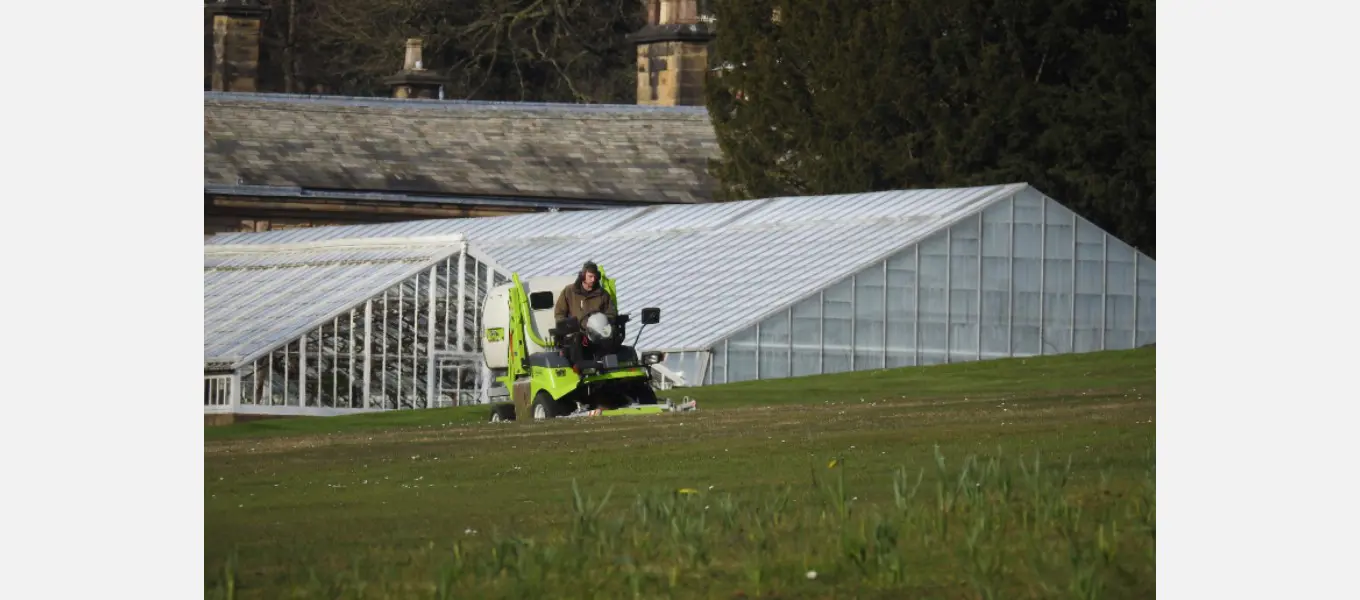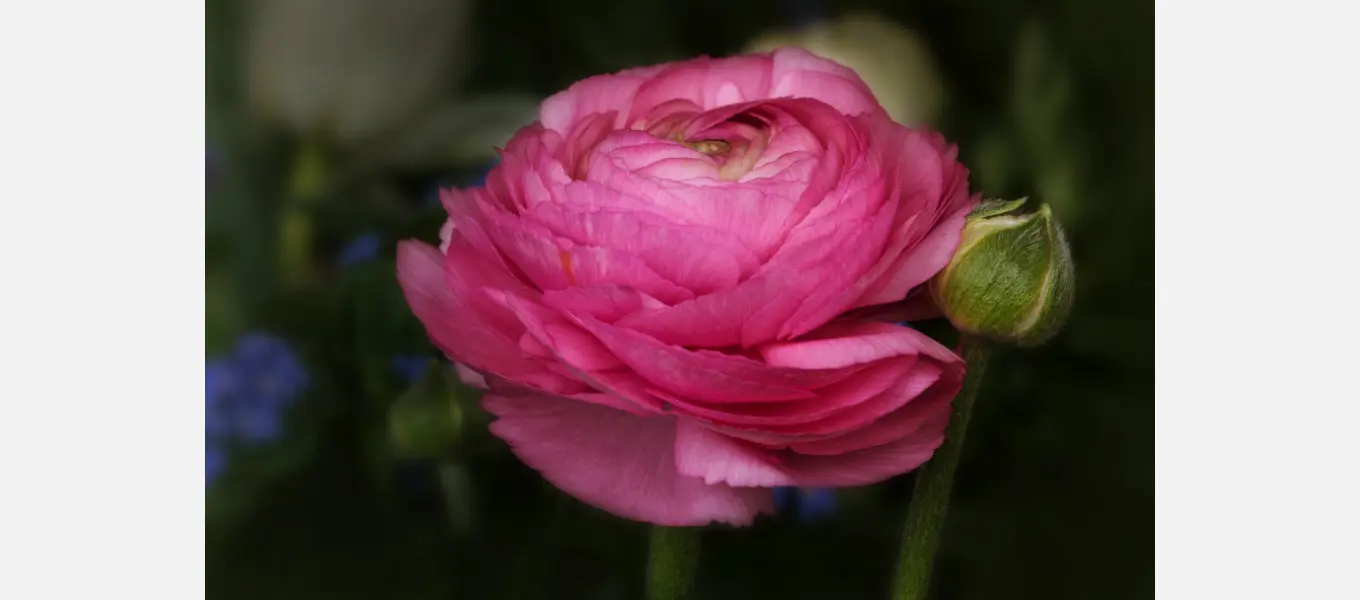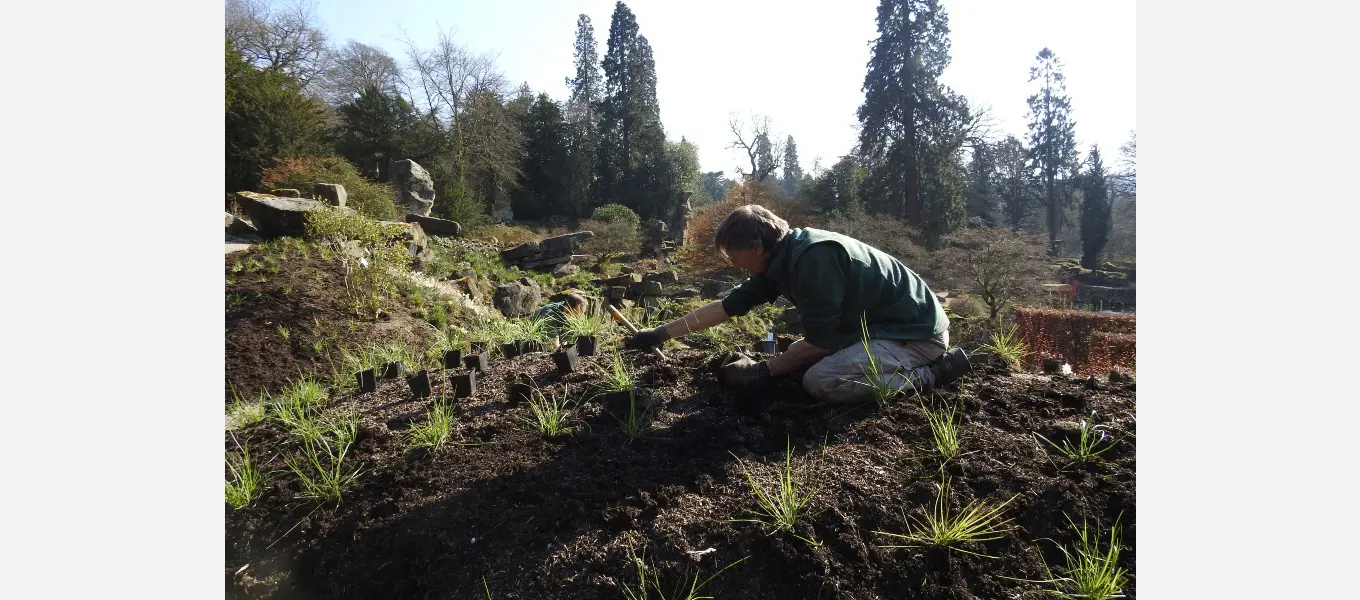Spring is always a busy time in the garden; the ground is warming up and everything is bursting into life, particularly the weeds! Lawnmowers are fired up for the first time since late autumn, hoes are sharpened to tackle the weeds and hungry shrubs are mulched and given their first feed of the year. Wherever you look there are signs of new life, a testament to the careful planning, preparation and care that goes on behind the scenes during the closed months.

In the cutting garden, early blossom is surrounded by the swelling buds of a carefully chosen assortment of flowering plants, while emerging seedlings shake off their soily bonnets. As the green shoots start to extend upwards, there’s a genuine feeling of excitement for what will come.
Tulips and Ranunculus are poised to yield vast amounts of flower. The varieties we grow at Chatsworth are not readily available from high street florists, which is perhaps one reason why these are firm favourites with visitors and the floristry team alike. Tulips of all colours are pulled from the ground, bulb and all, to ensure the longest stems possible for arrangements and to clear the ground for the next season’s crop to be planted.

In the glasshouses it’s the multitude of papery petals of Ranunculus asiaticus that catches the eye, arguably one of the most beautiful cut flowers at this time of year. While these appear to be as fragile as the glass they sit beneath, these flowers are actually quite robust and can be grown in an unheated glasshouse to produce an early spring harvest.

Alongside the cutting garden is the kitchen garden, which our gardeners continue to tend to while practicing safe social distancing. The kitchen garden has been developed over many seasons, and without ongoing care it would take just one season to ruin years of dedicated attention. A wide range of fruits and vegetables are grown here, and we are currently looking at ways to help our local communities with this year’s harvest.
In recent weeks we have placed, planted and watered almost 20,000 herbaceous perennials and many new trees and shrubs around the Jack Pond and through the Rock Garden. There are still around 25,000 more plants that need planting in the wet glade and surrounding areas in the northern most section of Arcadia, as well as 8,000 potted bulbs that have been grown in our nursery at Edensor and are now ready to transport and transplant.

Planning for all of this planting happened well in advance of the current coronavirus situation; collating plant orders of this magnitude has involved many different people and nurseries, as well as many hours of labour and a great deal of expense. Getting the plants into the ground is imperative to their survival and ensures that the hard work which has taken place over the past five years is not spoilt by an influx of weeds.
Weeds aren’t the only problem we face as we move into spring; as the weather warms and plants burst into growth, pests and diseases begin to multiply with the increase in their food supply.
We treat pests in as efficient and environmentally sensitive way as possible by identifying the pests and understanding the damage they cause in order to take timely action. We can then use a range of cultural, biological and, only as a last resort, chemical control to treat them. Considering the relationship between pest and host plant holistically greatly reduces the need for chemical intervention.
Vine weevil is one of the most common and devastating garden problems; adults eat the leaves of their host plants during spring and summer and then, fully-nourished, lay their eggs, often in container stock. As the grubs hatch they start feeding on the roots of the potted plants, ultimately leading to the plant’s death. Adults cause little damage in comparison to the grubs (but are responsible for future generations so should be got rid of where possible), so we apply a soil drench of nematodes in autumn to attack the larvae and save our plants!
Mealy bugs are another common pest in the garden, and our team spend many hours armed with damp paintbrushes and soapy water trying to rid the passion fruits of this pesky pest. If the infestation becomes too great, then the introduction of ladybird larvae (Cryptolaemus montrouzieri) can help to tackle the problem - adults and larvae eat their way through large quantities of the bugs. While this approach takes time and extra effort, it minimises the environmental risks and is a more ethical approach than using chemical pesticides alone.






